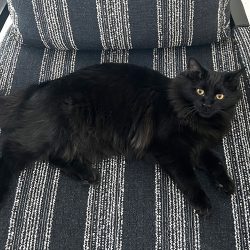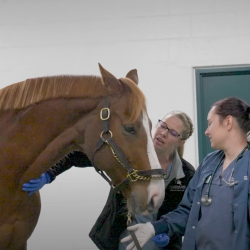History and Presentation

Wilson, a two-year-old neutered Pot-bellied pig, presented to Michigan State University’s Large Animal Clinic for a two-day history of respiratory distress after having his hooves trimmed. Before Wilson’s hooves were trimmed, his owners gave him an apple treat. To trim his hooves, a farrier rolled him onto his back; Wilson was visibly distressed throughout the process, and vocalized the entire time.
He continued to vocalize even after his hooves were trimmed, so his owners took him to his local veterinarian. There, he was prescribed a non-steroidal anti-inflammatory (carprofen) and an antibiotic (penicillin). His owners brought him back to the veterinarian later that day, as his labored breathing worsened. He was prescribed a different antibiotic (amoxicillin) to be given daily. Still in distress, his owners returned to the veterinarian two days later, at which point he was referred to Michigan State University Veterinary Medical Center due to his worsening clinical signs.
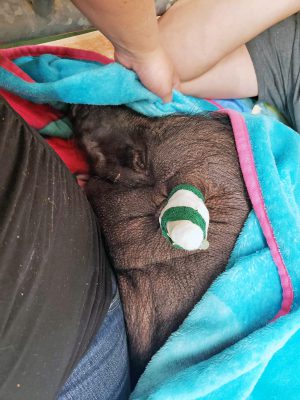
Upon presentation to the MSU Large Animal Clinic, Wilson was in respiratory distress. There was a prominent abdominal effort noted with his breathing and an increased respiratory rate. His lungs sounds were clear bilaterally. He was immediately placed on flow-by/mask oxygen.
Diagnosis and Treatment
Wilson was administered an intramuscular sedative in order to facilitate thoracic and pharyngeal radiographs. Radiographs identified a radio-opaque object at the tracheal bifurcation. No lung abnormalities were appreciated, and pharyngeal radiographs revealed a normal pharyngeal architecture and no evidence of upper airway obstruction.
To further assess and facilitate removal of the tracheal obstruction, Wilson was placed under general anesthesia for endoscopy. Endoscopy identified a piece of hoof lodged in the tracheal bifurcation. The piece of hoof was able to be removed endoscopically by passing an instrument through the endoscope, ensnaring the piece of hoof, and carefully removing it through the airway and out of the mouth. Endoscopic removal resulted in some tracheal irritation. A repeat radiograph was performed to confirm complete removal of the foreign body. Wilson received intravenous dexamethasone to reduce inflammation in his trachea, and ampicillin due to tracheal contamination and potential pneumonia. Wilson remained at the Hospital overnight and received intra-rectal fluids to restore hydration after several days of not eating or drinking well at home.
Wilson did well overnight and was noted to have a normal respiratory rate with no evidence of respiratory difficulty. In the morning, he was bright and displayed a healthy appetite.
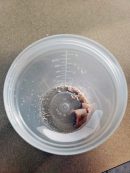
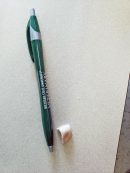
Comments
Since Wilson sustained significant trauma to his trachea, his owners were advised to monitor him carefully for signs of respiratory distress, increased respiratory effort, and fever. If he were to have developed a decreased appetite, generalized malaise, fever (greater than 101.5 F), or increased effort to breath, Wilson would have to be taken back to a veterinarian immediately.
Because Wilson had a foreign body in his airway, he was at an increased risk of pneumonia. As such, it was very important that Wilson received his prescribed antibiotics and anti-inflammatories and be rechecked in 10 days if his breathing pattern, appetite, and attitude hadn’t returned to normal. Fortunately, he was able to resume his normal diet, and only had to remain on exercise restriction for 7–10 days.
Handling for hoof and teeth trimming can be very stressful for pigs whose main defense mechanism is vocalization. For this reason, the Hospital recommends hoof trimming and tusk trimming under sedation. Performing hoof trimming and tusk trimming under sedation reduces stress for the pig and can be combined with vaccinations and ear and eye cleaning. The Hospital offers this service.


